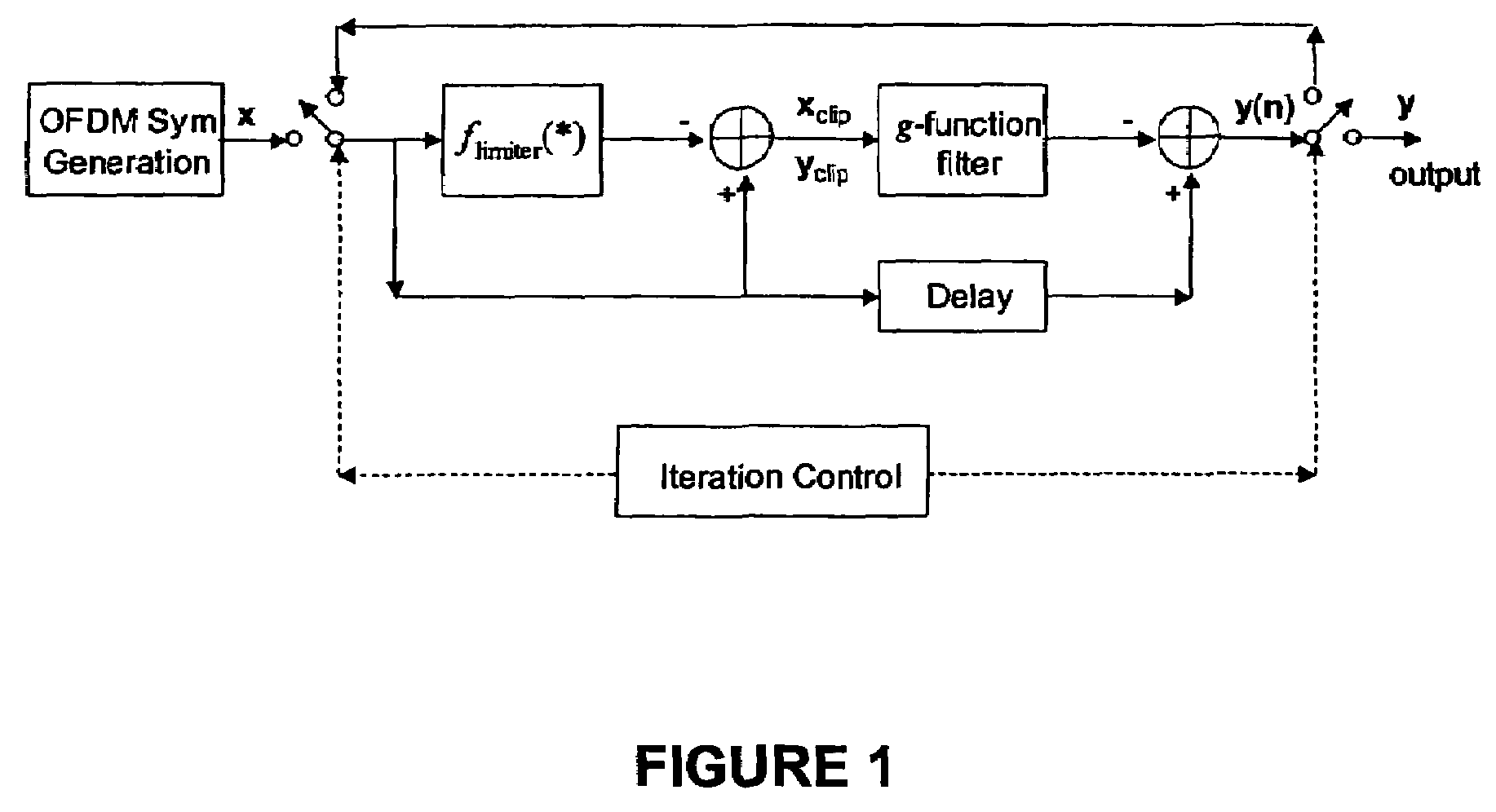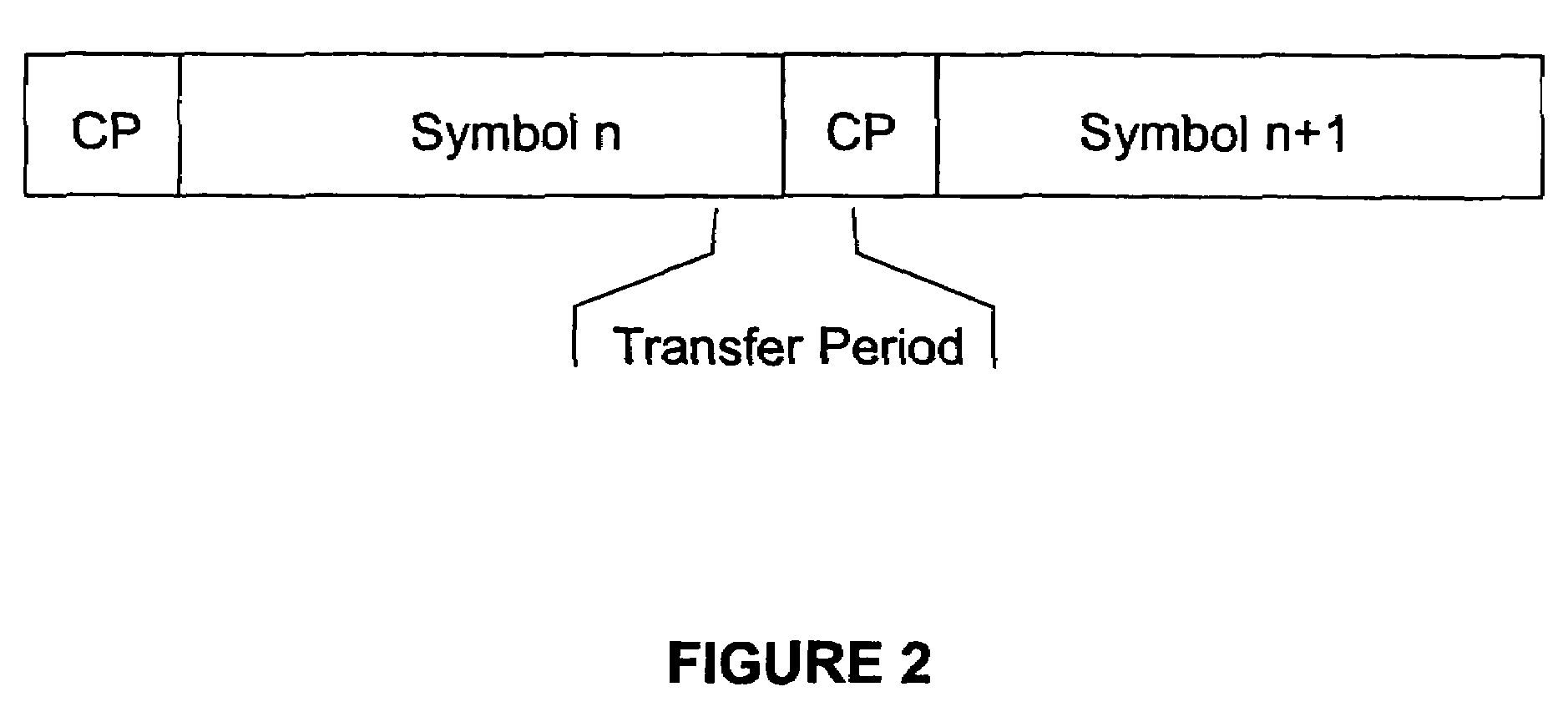System and method for reducing peak-to-average power ratio in orthogonal frequency division multiplexing signals using reserved spectrum
a technology of orthogonal frequency division and power ratio, applied in the field of power regulation, can solve the problems of low power efficiency of power amplifier operation, low power efficiency of power amplifier, and disturbance of out-of-band energy by intermodulation products among subcarriers
- Summary
- Abstract
- Description
- Claims
- Application Information
AI Technical Summary
Benefits of technology
Problems solved by technology
Method used
Image
Examples
Embodiment Construction
[0022]Generally, the present invention provides a method and apparatus for reducing the peak to average power ratio of an OFDM or Orthogonal Frequency Division Multiple Access (OFDMA) signal such as, but not limited to, WiMAX signals. The method operates on the signal only after it is converted to the time domain. The signal is compared to a power threshold and any signal above the power threshold is considered undesirable. A reduced signal is produced by reducing the magnitude to the power threshold whenever it exceeds that threshold. The delta between the original signal and reduced signal is the clipped signal. The clipped signal is multiplied by a g-function (a special type of filter function), and then subtracted from the original signal to produce a first iteration of a peak-reduced signal. The process can then be repeated using the first peak-reduced signal in place of the original signal to produce the second iteration of a peak-reduced signal.
[0023]This process can be repea...
PUM
 Login to View More
Login to View More Abstract
Description
Claims
Application Information
 Login to View More
Login to View More - R&D
- Intellectual Property
- Life Sciences
- Materials
- Tech Scout
- Unparalleled Data Quality
- Higher Quality Content
- 60% Fewer Hallucinations
Browse by: Latest US Patents, China's latest patents, Technical Efficacy Thesaurus, Application Domain, Technology Topic, Popular Technical Reports.
© 2025 PatSnap. All rights reserved.Legal|Privacy policy|Modern Slavery Act Transparency Statement|Sitemap|About US| Contact US: help@patsnap.com



